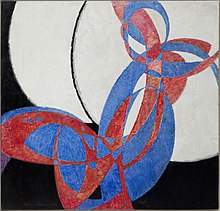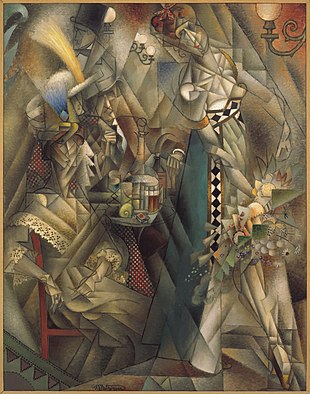西洋畫史反思:The Judgment of Paris by King, Ross (2006): 一張 1912 年秋季沙龍 ( The Salon d'Automne of 1912 )展覽照片: Kupka's Fugue in Two Colors。 Jean Metzinger (Dancer in a Café), Joseph Csaky (Groupe de femmes), Francis Picabia (La Source), Amedeo Modigliani (sculptures) and Henri Le Fauconnier (Mountaineers Attacked by Bears).
https://www.facebook.com/hanching.chung/videos/166675138933255
King, Ross (2006), The Judgment of Paris 1868~1874 Ernest_Meissonier1815~189
Jean-Louis-Ernest Meissonier | |
|---|---|
 |
King, Ross (2006), The Judgment of Paris
The standard account of the rise of Impressionism describes Édouard Manet as a misunderstood pioneer whose noble struggles paved the way for Monet, Cézanne, Degas and others. King presents a somewhat different drama: his Manet, a yellow-gloved, upper-class dandy eager for attention, sought out controversial subjects to épater le bourgeois, and far from toiling away just for art's sake built himself an exhibition hall near the Pont de l'Alma, lined in red velvet, in hopes of selling big. He didn't, but he was a serious painter who had plenty of defenders among influential critics, even for shocking pictures like "Déjeuner sur l'Herbe," the famous canvas inspired by Titian (some say Giorgione) that depicts a naked woman having a picnic with two fully clothed men.
Manet is usually the hero of the story, but one can't help being charmed by King's other protagonist, Ernest Meissonier. Seventeen years older than Manet, Meissonier was by the 1860's the most famous and best-paid painter in France and perhaps the world, a former druggist's apprentice anointed by great figures like Delacroix. He was admired for his obsession with historical accuracy, and for the meticulous skill with which he painted details so fine they could be examined with a magnifying glass.
His most serious efforts went toward recreating scenes from Napoleon's famous battles, as in the canvas "Friedland," which King discusses at length. He would spend years on a picture, borrowing the very cloak a general had used, making elaborate wax models, even building a small railway on his estate so that he could sit in a moving rail car and sketch horses in motion. Meissonier's paintings sold for record prices up to the late 19th century, but his realistic detail and some of his folksier subjects weighed against him for most of the 20th century, when posterity embraced the more dashing effects of Impressionism and the forms of abstraction that were to come.
Marc Gotlieb, The plight of emulation: Ernest Meissonier and French salon painting (Princeton University Press, 1996)
Patricia Mainardi, The end of the Salon: art and the state in the early Third Republic (Cambridge; New York: Cambridge University Press, 1993)
https://en.wikipedia.org/wiki/Ernest_Meissonier
**** 一張 1912 年秋季沙龍 ( The Salon d'Automne of 1912 )展覽照片: Kupka's Fugue in Two Colors。 Jean Metzinger (Dancer in a Café), Joseph Csaky (Groupe de femmes), Francis Picabia (La Source), Amedeo Modigliani (sculptures) and Henri Le Fauconnier (Mountaineers Attacked by Bears).
The Salon d'Automne
https://en.wikipedia.org/wiki/Salon_d%27Automne
***
The Salon d'Automne of 1912 1912 年秋季沙龍
The Salon d'Automne of 1912 was held in Paris at the Grand Palais from 1 October to 8 November. The Cubists (a group of artists now recognized as such) were regrouped into the same room, XI.
The Salon d'Automne of 1912, held in Paris at the Grand Palais from 1 October to 8 November. Kupka's Fugue in Two Colors is exhibited on the left. Other works are shown by Jean Metzinger (Dancer in a Café), Joseph Csaky (Groupe de femmes), Francis Picabia (La Source), Amedeo Modigliani (sculptures) and Henri Le Fauconnier (Mountaineers Attacked by Bears).
****
***
****
***
***
****
Dancer in a Café
 | |
| Artist | Jean Metzinger |
|---|---|
| Year | 1912 |
| Medium | Oil on canvas |
| Movement | Cubism |
| Dimensions | 146.1 cm × 114.3 cm (57.5 in × 45 in) |
| Location | Albright-Knox Art Gallery. Acquisition: General Purchase Funds, 1957, Buffalo, New York |




沒有留言:
張貼留言